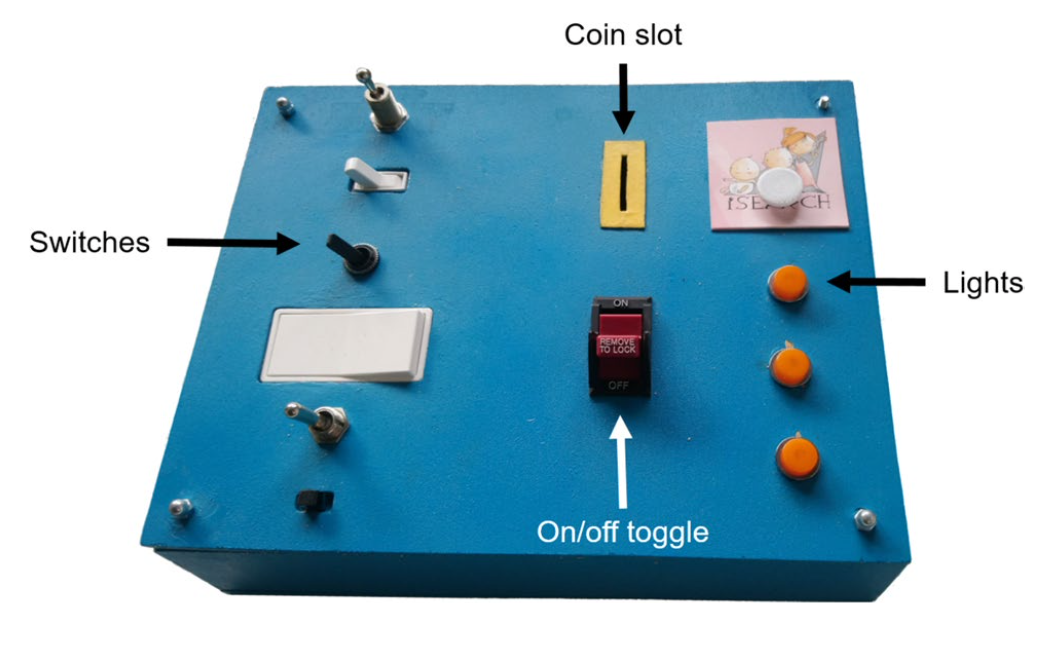How do you turn on the television? How do you go faster on a swing? What colors of paint can you mix to make the color you want?
These questions seem obvious to us as adults, but at some point in our lives, we had to figure out the answers. To do so, we needed to be capable of causal learning, the ability to acquire knowledge about cause and effect in various systems. One powerful strategy for causal learning—familiar to any researcher or student of science reading this blog—is to change one variable at a time and see what happens. But are children naturally good at using this strategy?
On the one hand, past research suggests they are not. In many experiments, children fail to employ the “control of variable” strategies, instead changing multiple variables at a time. The control of variable strategies is a rather sophisticated one, so it may only be common once children grow older and/or receive some instruction about it. This view appears to be widely adopted by educators and educational psychologists; school curricula and educational standards often highlight that a key goal of STEM education is to teach children to use this strategy.
On the other hand, recent research in developmental cognitive psychology shows that children are more cognitively capable than previously thought. In particular, toddlers and young children have been shown to flexibly select from among competing strategies when reasoning about various situations.
In a recent paper in Psychonomic Bulletin & Review, researchers Neil Bramley, Angela Jones, Todd Gureckis, and Azzurra Ruggeri (pictured below) compared these competing perspectives by examining what strategies 7- to 13-year-old children use during causal learning.

A key insight that the authors draw on is that the control of variables strategy, while helpful, is not always the best strategy. For example, it has been mathematically shown that if a certain effect has only one, or a limited number of causes, the control of variables strategy is actually not the most effective strategy. Instead, it is most efficient to use a “divide-and-conquer” strategy, testing multiple potential causes at once to identify the right one. Maybe children can realize this, and so the reason children didn’t tend to use the control of variables strategy in past experiments is because it just didn’t seem like the most effective strategy.
To investigate this possibility, the authors had children from ages 7 to 13 take part in a causal learning experiment. Children were shown a box with various switches and a light, as in the picture below. Then, they were given one of two tasks, and asked to complete it over the course of a few trials. For some kids, only one switch would turn the light on. In this case, their goal was to find the only light switch that worked. For other kids, all the switches would turn the light on—except for one. In this case, their goal would be to find the light switch that didn’t work. Critically, the control of variables strategy is only the most effective in the second scenario—for the first scenario, it is mathematically more efficient to test multiple switches at the same time.

What strategies did children tend to use? It depends on the task. When trying to figure out which switch doesn’t work, kids were most likely to use the control of variables strategy, testing one switch at a time to find the right one. And in fact, this was the most efficient strategy for this task. On the other hand, when trying to figure out the single switch that works—a situation in which the control of variables strategy is not the most efficient—children were more likely to instead try out multiple switches at a time.
So, children are surprisingly sophisticated in their ability to pick strategies when engaging in causal learning. It is not the case that children generally pick one or the other efficient or inefficient strategy. Instead, children flexibly adapt to their situation, picking the most appropriate strategy for the task. This flexibility could help explain why previous research may have underestimated children’s causal learning abilities. It is possible previous experiments found that children didn’t use the control of variables strategy because the kids simply didn’t think it was the best strategy for the task.
Overall, these results suggest that perhaps kids don’t get the credit they deserve for their causal reasoning abilities.

Featured Psychonomic Society Article
Bramley, N. R., Jones, A., Gureckis, T. M., & Ruggeri, A. (2022). Children’s failure to control variables may reflect adaptive decision-making. Psychonomic Bulletin & Review, 29(6), 2314-2324. https://doi.org/10.3758/s13423-022-02120-1
